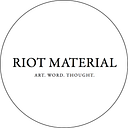Tracey Emin: A Fortnight of Tears
at White Cube Bermondsey, London (through 7 April)
Reviewed by Christopher P Jones
Some artists use their art to put up a facade for the world; others seek to bear themselves whole. The art of Tracey Emin — who has a remarkable exhibition of new work at the White Cube Bermondsey, London — undoubtedly falls into the latter category. The title, A Fortnight of Tears, has apparently been rolling around in the artist’s head for fifteen years, distilled by the recent death of her mother, but first kindled by a relationship breakup in her thirties when, she explains, “I was crying for the loss of my future. Then when my mum died, I was crying for my past.”
Emin’s work often get described as ‘confessional’ because it deals in honest expositions of her own personal and tumultuous history. Since the 1980s, when she emerged as the incalcitrant face of the Young British Art movement, Emin has mined her own traumatic past to produce work that is in turns startling, controversial and affecting. She has been public about her fractured childhood, experiences of abortion and teenage promiscuity. For her entire career, which reached a high-point with her controversial My Bed (1998) — a coruscating self-portrait through an unmade bed spilling over with cigarette butts, Polaroid camera shots, condoms, vodka bottles, bloodied underwear, and so on — Emin has turned again and again to her own life for subject matter. In this current exhibition, across dozens of paintings, videos and several huge bronze sculptures, she takes up the same pursuit, examining bouts of personal fear, self-loathing and ongoing insomnia to further entrench herself in the confessional idiom.
Now entering the third stage of her life — Emin has said “Our lives are in a trilogy. I’m in my last bit, so I’ve got to try and get it right” — her approach to making art seems to firmly inhabit a mode of grown-up contemplation, albeit of the unflinching variety. There is a depth to the work here that speaks of maturity. The White Cube makes the case for Emin’s wider importance by stating that her work “resonates with the feminist tenets of the ‘personal as political’”. And in the age of #metoo, Emin’s dialogue with her own experiences acquires a deeper significance.
The gallery space is broad and open, and lends itself perfectly as a benign backdrop to Emin’s outpouring. Paintings are given swathes of wall-space to articulate their message, which they do sometimes in a whisper and sometimes in a howl. As a visitor, you can stand up close or retreat to open floor, depending on the decibels.
In a painting such as It was all too Much (2018) the colour palette is mainly confined to pinks and reds, where a gestural weave of lines is suggestive of a naked figure in some sort of sexual distress. Where the figure’s head is painted, a coarse black and purple scribble erupts, as if the face has been redacted by emotional necessity.
In the dead of night I wanted you (2018) achieves its effect by the application of thick and thin brush marks that thrash against each other in a bruising clamour for canvas space. The paired-down colour palette — red and black this time — surrender any formal complexity for a more direct struggle between form and content. . .
To read the rest of this review, go to Riot Material magazine: https://www.riotmaterial.com/tracey-emin-a-fortnight-of-tears/
And please check out our Riotous Instagram Gallery: https://www.instagram.com/riotmaterial/
